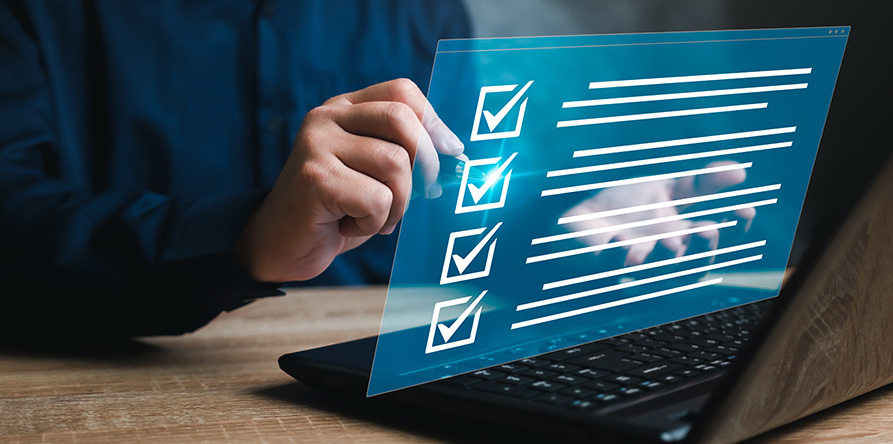
Your 2023 Tax Return Checklist
Keep this handy list of the most common forms, receipts and numbers close by when you prepare your 2023 income tax return. Doing your 2023 tax return could be faster (and potentially more rewarding) if you have all your information and documentation ready in advance.
To make the process easier, here’s a checklist of the most common things Canadian taxpayers need come tax time.
From Canada Revenue Agency
- Your previous year’s Notice of Assessment (in this case for the 2022 tax year). If you can’t find it, don’t worry. You can get a copy by signing into the Canada Revenue Agency (CRA) My Account service. You’ll access this service through a sign-in partner website, such as your online bank, or you can register for a CRA password. This free portal will give you access to a personal web page that records all your correspondence and transactions. It’s always worthwhile to make sure you can log into your CRA account before you file to make sure you have access.
From your files
- Last year’s completed tax return. It may not be necessary, but it can help you locate numbers that prove your identity in communicating with the CRA, as well as remind you how you reported income and deductions in the past.
From your employer(s)
- T4 slip(s). The T4 is the most common tax slip, documenting not only your income but also tax and other deductions at source, as well as non-cash benefits. Some tax preparation software may allow you to import this information directly into your return. However, it’s still a good practice to make sure your employment income has been entered correctly.
From the federal government
- T4A slips cover income from government programs such as Employment Insurance and other income sources, including self-employed commissions and Registered Education Savings Plan (RESP) educational assistance payments you may have received.1
From financial institutions
- Various official tax slips such as the T5, T3 and T5008, etc. These typically list income such as interest, dividends and capital gains earned from investments held in non-registered accounts.
- Official Registered Retirement Savings Plan (RRSP) contribution receipts. You will likely receive separate receipts for contributions made in calendar 2023 and in the first 60 days of 2024, so make sure you have them all. Check with your financial institution if you haven’t received yours yet.
- If you started investing in the recently launched Tax-Free First Home Savings Account, you should receive receipts for the contributions you made in 2023. Unlike for RRSPs, the contribution deadline for FHSAs is December 31.
From not-for-profit organizations
- Official charitable donation receipts.
- Official political contribution receipts from political parties or candidates.
Unofficial receipts for eligible expenses
- Out-of-pocket medical expenses such as prescription drugs, dental and vision care and physiotherapy (this is only a partial list of common examples) may be eligible for a non-refundable tax credit, with certain conditions. The list of medical expenses you may be able to claim might be longer than you think.2
- If you earned self-employment or business income – for example, from gig work or a small business run as a sole proprietor – you may deduct self-employment or business expenses incurred to support that activity. Some common examples of eligible business expenses include office rent, advertising, supplies, travel, phone and internet service, repairs and maintenance, use of a car and the use of (part of) your home for the business activity.
Employees may be able to deduct work-from-home office expenses, such as work-space-in-the-home expenses, office supplies and certain phone expenses. One notable change this year: the temporary flat rate method that many Canadians used for the 2020, 2021 and 2022 tax years has been eliminated for 2023. Instead, you will need your employer to provide you with a signed and completed Declaration of Conditions of Employment T2200 form.
Of course, you can’t claim expenses reimbursed by your employer. You must meet all of the following conditions to claim these expenses for 2023:3- You were required to work from home by your employer or voluntarily entered into a formal remote working arrangement with your employer.
- You were required to cover your expenses for your workspace in your home.
- Your expenses are used directly for work.
- You spend more than 50% of your time in your home office for at least four consecutive weeks in a year or you use your workspace to earn income (note that the CRA says you also have to use your space “regularly and continually for in-person meetings with clients, customers or other people while doing your work”).
- Child care and adoption expenses.
- Post-secondary tuition: T2202A is the official tax slip issued by qualifying educational institutions. Also eligible is interest on student loans.
- Moving expenses (if you relocated to start a job and moved at least 40 km closer to your new work location, travelling by the shortest public route).4
- Digital news subscriptions.
- Financial documentation regarding a home purchase and/or sale. First-time homebuyers are eligible for a tax credit.5
- Exam fees for professional certification.
Note for the 2023 tax year: Tradespersons can now claim up to $1,000 for the cost of their tools. The government also introduced a new refundable multi-generational home renovation tax credit. Those who qualify can claim up to $50,000 for renovation costs to create a self-contained secondary unit within their home for use by a senior or an adult who is eligible for the disability tax credit. You don’t have to submit your receipts, but be sure to hang on to any supporting documents in case the CRA has questions.6

